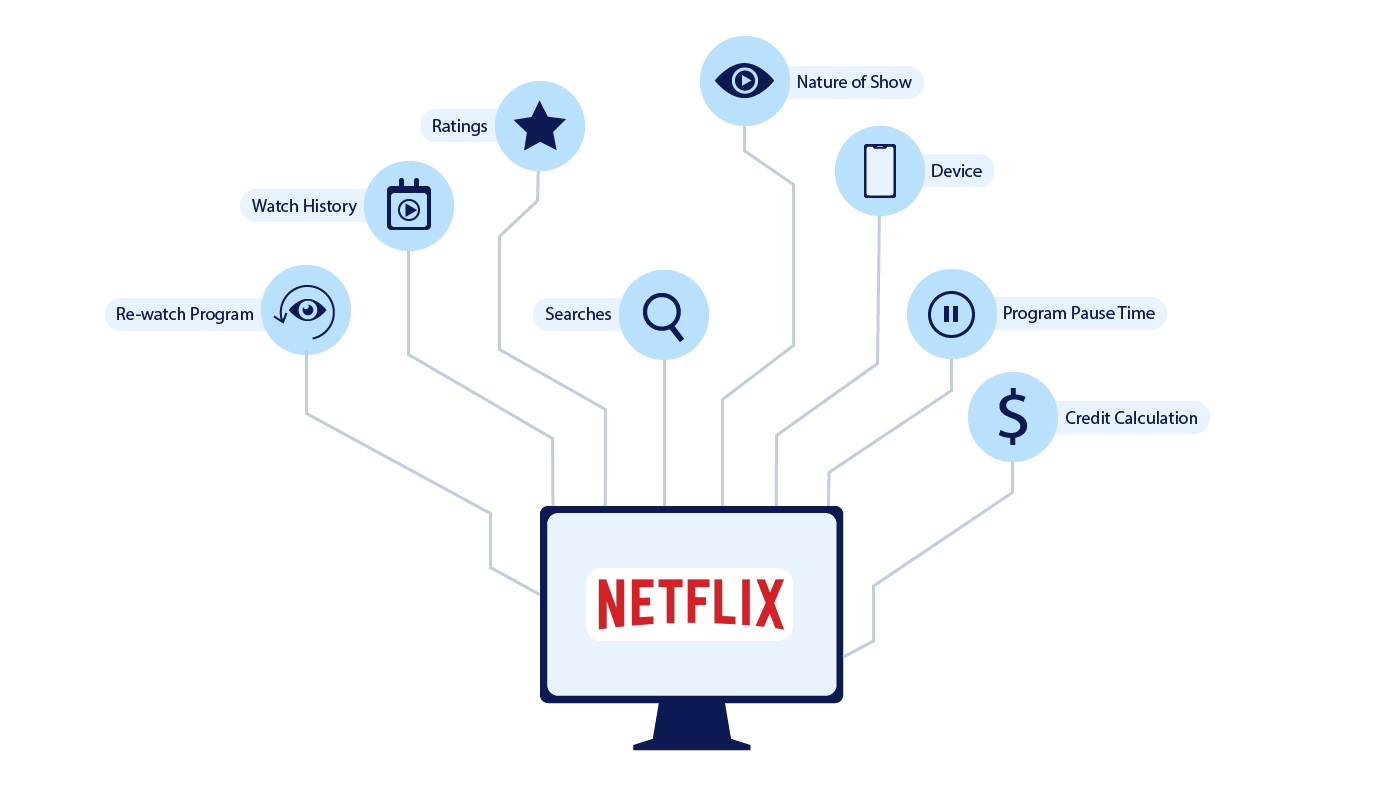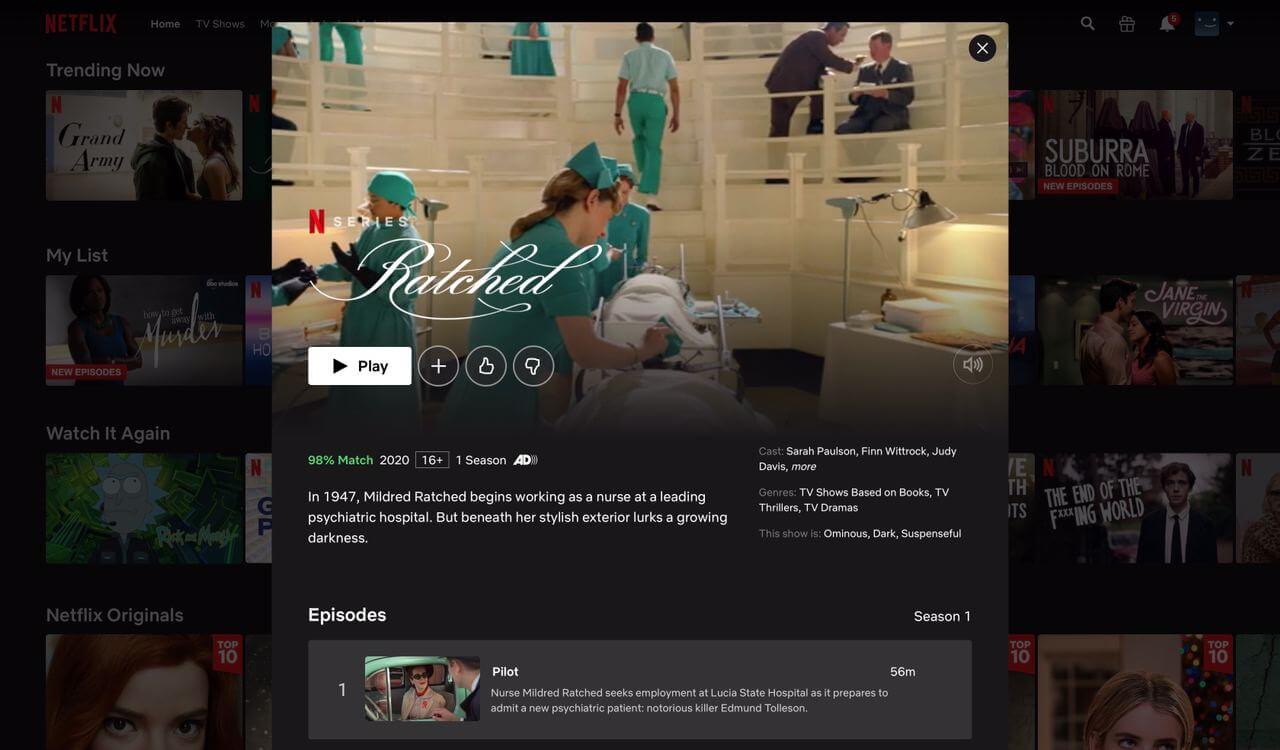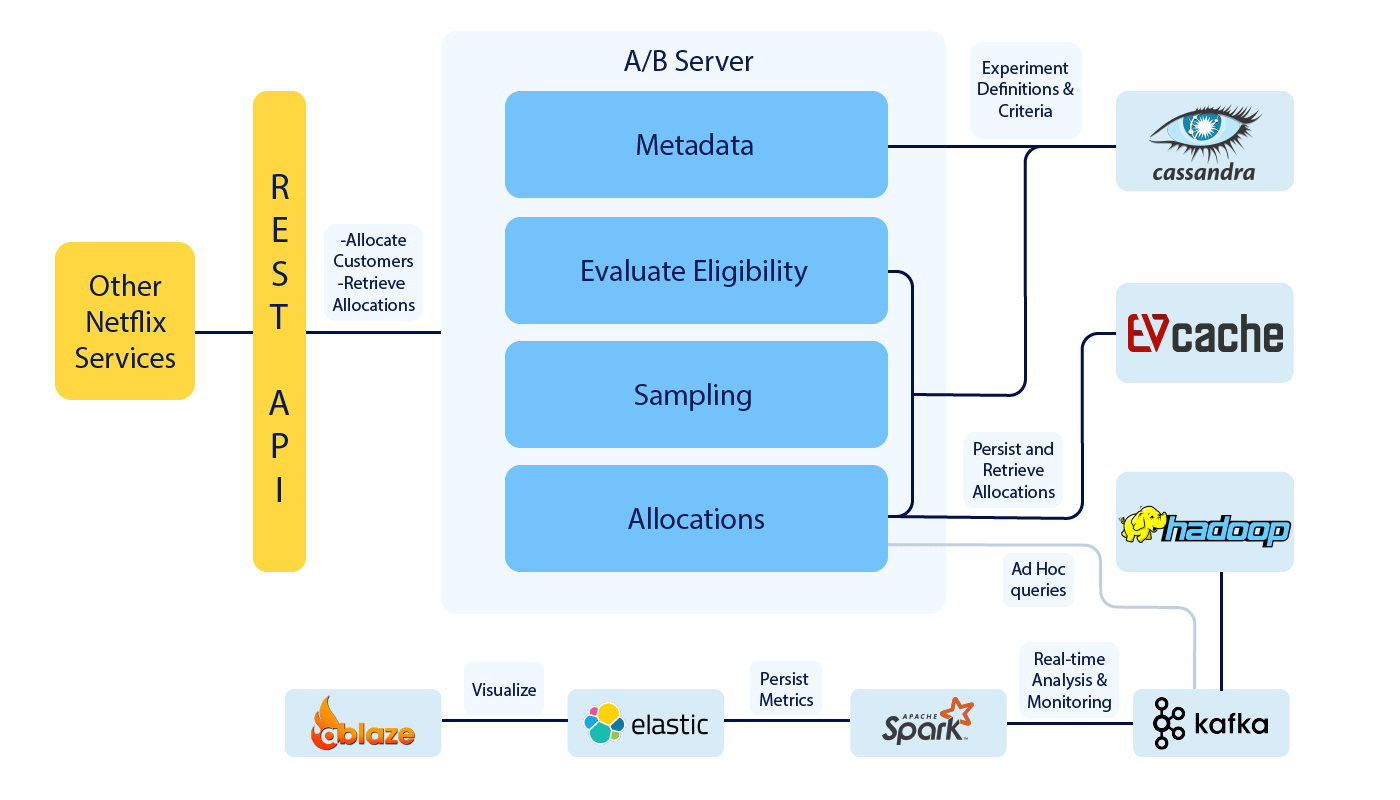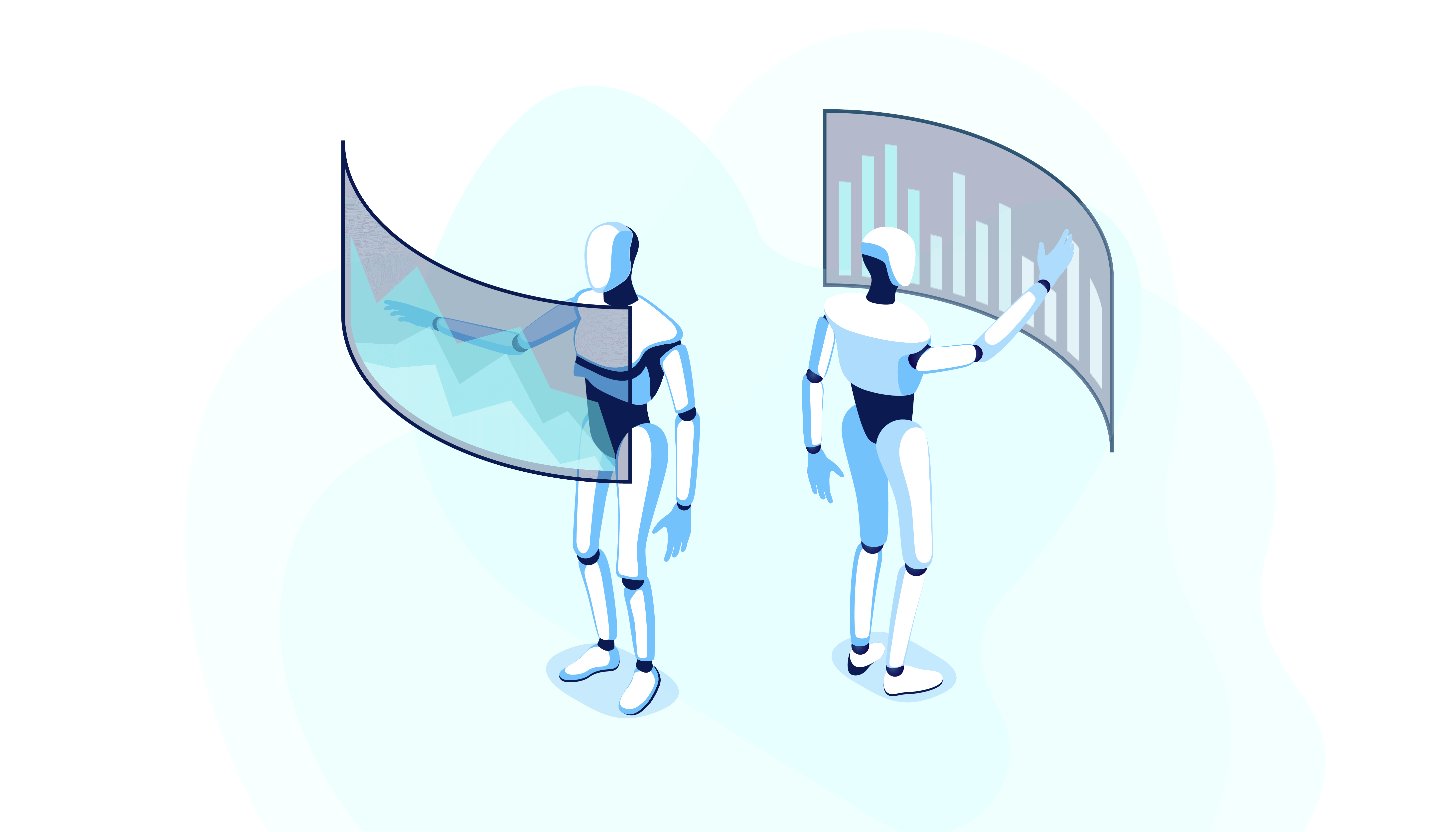Ever wonder why you can’t stop watching that new show on Netflix? It’s not just the captivating plot or the talented actors. Behind the scenes, a powerful force is at play: Netflix data science.
Today you will learn how data science, which is popular among modern startups, is driving the giant of the film industry forward.
Prepare to be surprised as we unveil the intricate Netflix data science and innovative techniques that power the world’s leading streaming platform, making it a haven for both viewers and data enthusiasts alike.

The History of Netflix Data Science and Its Recommendation System
In the late ‘90s, when Netflix just started as a DVD sales & rental company, the only things they could analyze were the titles of movies and TV shows that were ordered by their customers, the shows and films that were in their DVD queues, and movie star ratings from 1 to 5. But that was not enough. This is why in 2007-2009, Netflix had a one-million dollar-prize public competition to improve their existing recommendation system of five-star rating.
BellKor’s Pragmatic Chaos team managed to boost Netflix’s predicting algorithm by 10.05%. That was a huge advancement not only for the company that would give it a major boost to improve its streaming service but the world in general.
In 2012 Netflix started to produce its original content and created such amazing shows and movies as War Machine, Narcos, House of Сards, Orange is the New Black, and many others. In 2016, the company went global, meaning that viewers could now subscribe to Netflix from different countries around the globe.

Nowadays, Netflix has become the most popular streaming service in the world due to its recommendation system capacity to personalize content and satisfy users’ preferences and needs with the help of data they have accumulated over many years and various viewers. You can not only decide on the devices they are using and where they are watching a show, but you can also easily figure out how much time they spend on the streaming service, what kind of content they prefer, and what they are likely to choose next. In addition, the company uses both demographic data and behavioral information.
The personalized user experience starts from the device you prefer—from a smart TV to Xbox and PlayStation, to your homepage. You might see personalized images of TV shows and movies, and recommended shows on the main screen, which is just an assembly of different algorithms. For instance, you’ll see personalized rows with recommended TV series as Netflix algorithms will show the best options. Moreover, the recommendation system appeals not only to your taste but to the taste of your entire household, which provides diverse experiences to everyone using the streaming service.
Using accumulated data, Netflix data science gives its members truly unique recommendations as they go beyond simple categorization of genres like thrillers or comedies that you’d prefer, but pinpoint more exact preferences like ‘90s thrillers that you may enjoy.
Netflix also experiments a lot. They do a lot of A/B testing. For instance, two people might see the same content on the main page but the layout (like posters) will be different for each individual. It might sound irrelevant, but the company discovered that some TV shows and movie covers are better than others in terms of user engagement.
The company also utilizes and optimizes ranking algorithms to provide viewers with the best content that will suit their preferences and needs.
What Does Netflix Use for Big Data?
Millions of viewers across the globe are engrossed in Netflix right now, generating a constant stream of data. This Netflix big data, in the form of billions of user ratings, social media buzz, search queries, and even queue preferences, forms the raw material for an intricate symphony conducted by the power of big data.
Netflix doesn’t just store this data; it utilizes a diverse array of technologies to analyze and extract valuable insights that fuel its success. Here are technologies and frameworks:
- The Data Vault (Amazon S3): Imagine a vast storage facility – Amazon S3 acts as Netflix’s data vault, securely storing all the information it gathers. This ensures scalability, meaning the system can efficiently handle the ever-growing volume of data. Additionally, it guarantees high availability and performance, allowing for seamless access and analysis.
- The Real-Time Stream (Apache Kafka): Not all data arrives in batches. Viewing habits, social media trends, and search queries generate a continuous stream of information. Apache Kafka acts as a conductor, ensuring the smooth and efficient processing of this real-time data stream, and making it readily available for analysis.
- The Data Historian (Apache Hive): Think of a giant library – Apache Hive serves as Netflix’s data warehouse, organizing and structuring the vast amount of historical data collected over time. This allows for efficient retrieval and analysis, enabling the exploration of trends and patterns across different timeframes.
- The Processing Engine (Apache Spark): Just like a powerful engine that drives a car, Apache Spark acts as the processing engine for Netflix’s big data operations. This robust framework allows them to analyze massive datasets quickly and efficiently, extracting meaningful insights and generating valuable predictions.
- The Diverse Tools and Languages: Beyond the core technologies mentioned above, Netflix employs a diverse toolkit, including Python for scripting, R for statistical analysis, Tableau for data visualization, and Sting for data streaming. This extensive toolkit empowers them to tackle complex data challenges and uncover hidden patterns.
Netflix transforms the raw data into actionable insights. These insights inform content creation strategies, personalize recommendations, and even optimize user experience. As the world of streaming continues to evolve, Netflix is poised to remain a leader, powered by the ever-evolving symphony of its big data orchestra.
What Netflix Machine Learning Algorithms Does the Company Use?
Netflix has used a lot of models to build the recommendation and personalization engine it has today. And this is just a fraction of what is being used at the company today.

-
- Clustering algorithms from k-means to affinity propagation
- Logistic regression
- Linear regression
- Elastic nets
- Matrix factorization
- Singular value decomposition
- GBDTs or Gradient-boosted decision trees
- Random forests
- Restricted Boltzmann machines
- Markov chains
- Latent Dirichlet allocation
- Deep learning
- etc.
All in all, Netflix data science is in all business areas, from marketing and localization to user acquisition, quality control, and streaming.
Wrapping Up
It’s hard to imagine the vastness of tastes of different people throughout the globe. Just imagine that Netflix alone has 193 million subscribers in more than 190 countries. All these members have various tastes in movies and TV shows and Netflix data science’s main task is to provide each and every one of them with personalized content.
If you’re looking to implement Data Science into your business, you can make use of LITSLINK AI solution development services.


![Unlocking Competitive Edge: Harnessing the Potential of Machine Learning Across Various Industries [Includes Infographic]](https://litslink.com/wp-content/uploads/2021/03/featured-machine-learnig-applications_1.jpg)


